Digital Marketing in Asia - Are Yahoo! Japan and LINE Essential for Success in Japan?

I am Marcel Sobieski, and as always, in our interviews, we will dive into talks with substance, to share useful information that can impact one’s operations and vision. We are so excited to have with us today Joanna Pawlowicz and Maria Arteaga, both from Yahoo! JAPAN and LINE. We will try to dive deeper into Japanese online activity, local user behaviour, market trends, challenges and how Western companies can enter the very specific Japanese market.
Joanna and Maria, thank you for accepting our invitation. To start with, could you please introduce yourself, your background, expertise and how you joined Yahoo! JAPAN and LINE? What is your mission?
Joanna: Hi Marcel, thank you so much for having us, it is a pleasure! My name is Joanna and I handle internal marketing here at SB Telecom Europe. I have over 10 years of experience in digital marketing and working with Japanese companies, and have lived in Japan for some time. My mission is to guide clients through the complexities of the Japanese market. I know how difficult it can be to navigate through it, especially if you've never had any contact with Japanese culture or language.
Maria: Thank you Marcel for the opportunity to participate in this interview. My name is Maria and I work closely with clients and agency partners from all over the world. I focus on strategic partnerships, Japanese market expansion, identifying new business opportunities as well as fostering relationships with client-agency partners. LINE and Yahoo are the two most important media networks in Japan and essential for advertisers to have a presence in them, so I provide consultation and advice on how to get started!
You are official global media representatives for Japanese platforms: LINE and Yahoo! JAPAN. How can you support overseas clients?
We are a part of the LINE Yahoo team and act as official global media representatives for Japan’s two largest digital platforms: LINE and Yahoo! JAPAN. We provide free support to clients who manage their own Yahoo! JAPAN Ad and LINE Ad accounts. We can help you set up the accounts, provide basic interface training, perform linguistic control of your campaign assets, and provide detailed performance reports. Our account managers are bilingual and can support clients in both English and Japanese. We also send out regular Japanese market insights and trend updates.
While LINE and Yahoo! JAPAN may not be as widely recognized in Western markets, they are dominant forces in Japan, commanding significant market share and user engagement. LINE is a popular messaging app with a diverse range of services, including news, payments, and e-commerce. Yahoo! JAPAN is a comprehensive internet portal offering search, email, news, and various online services.
I have to admit, I was slightly confused about the two entities Yahoo! and Yahoo! Japan. What is the main difference? To what extent do they stand apart?
Yahoo! JAPAN is a separate entity from the American Yahoo. While both companies share a common heritage, they have evolved independently to cater to the specific needs of their respective markets. Yahoo! JAPAN is deeply integrated into the fabric of Japanese society, offering a wide range of services and content tailored to local preferences.
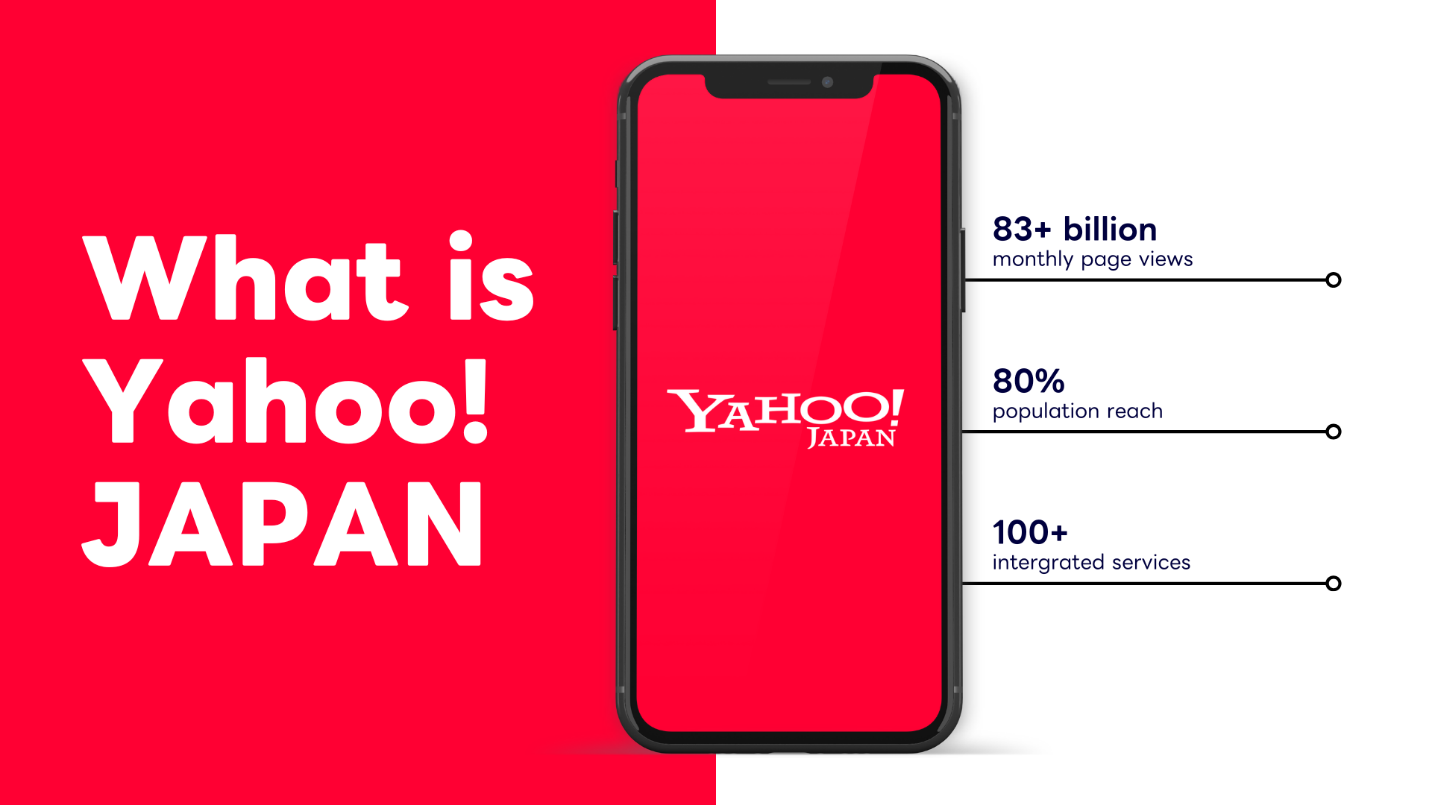
Yahoo! JAPAN is much more than just a search engine. It is a digital platform customized to the preferences of Japanese users. People use it to perform online searches but also check their mail, keep up with the news, shop online, or plan their journeys.
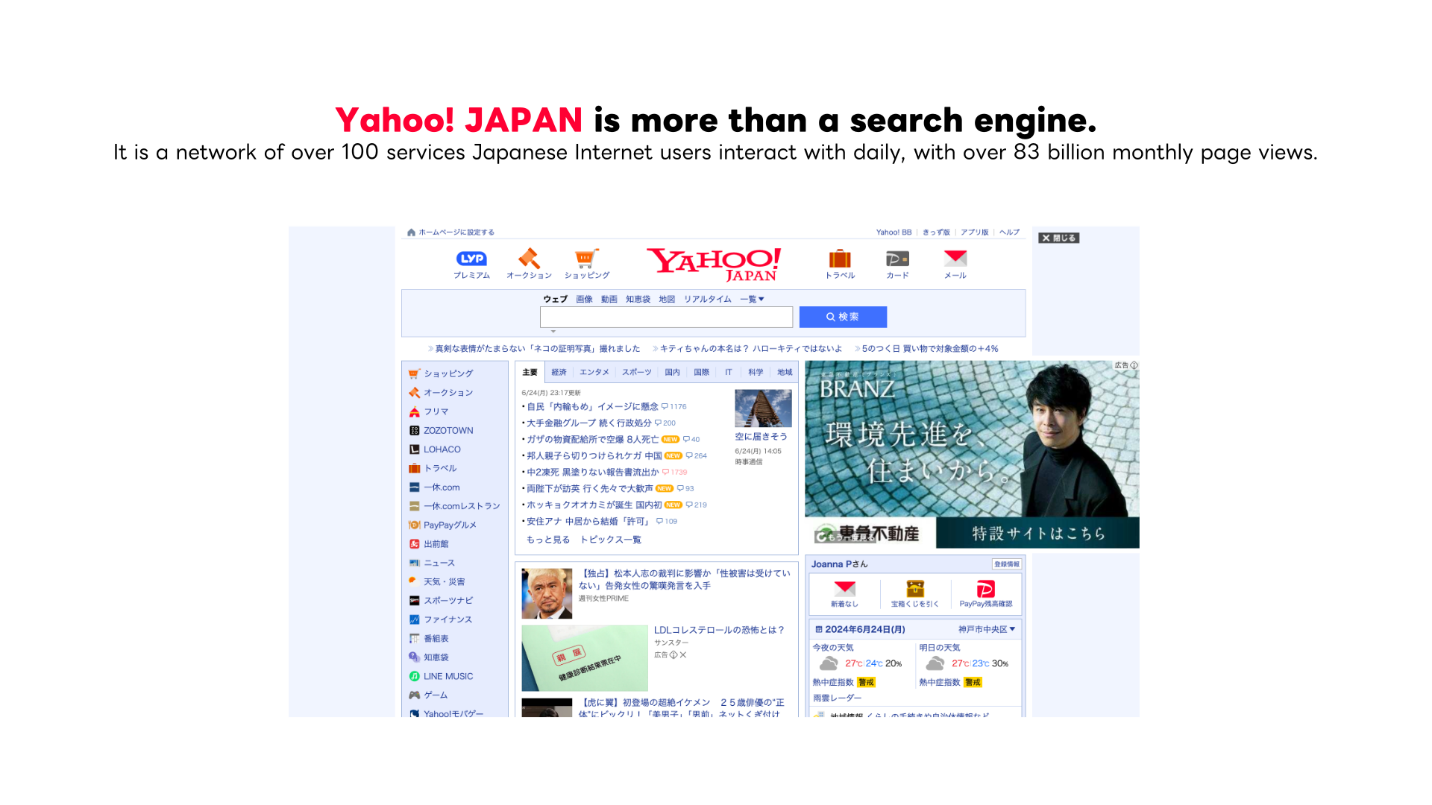
And how about LINE?
LINE is a versatile messaging app that has expanded beyond its core communication function to encompass a variety of services. It has become an essential part of daily life for many Japanese people, serving as a platform for social interaction, news consumption, e-commerce, and more.
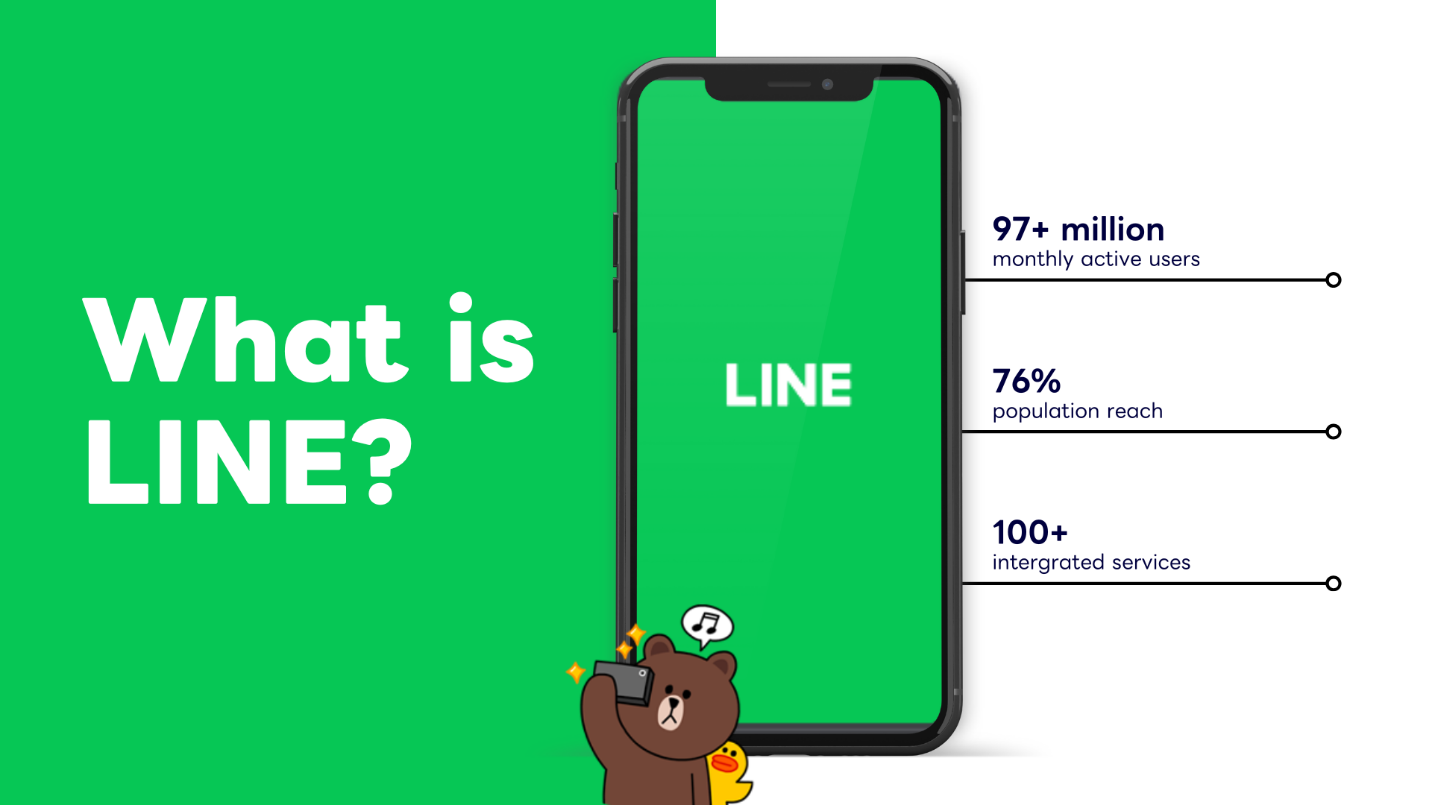
Once you open your LINE app, you can choose between 5 tabs at the bottom of the screen.
The home tab is where you can find information about your LINE account. The talk tab will take you to the chat screen – LINE's primary function. Here you can talk with your friends, make video calls, and create group chats. VOOM is a short-form video platform, similar to Instagram Reels or TikTok. News is where users keep up with the latest news, and Wallet allows you to make payments and collect points.
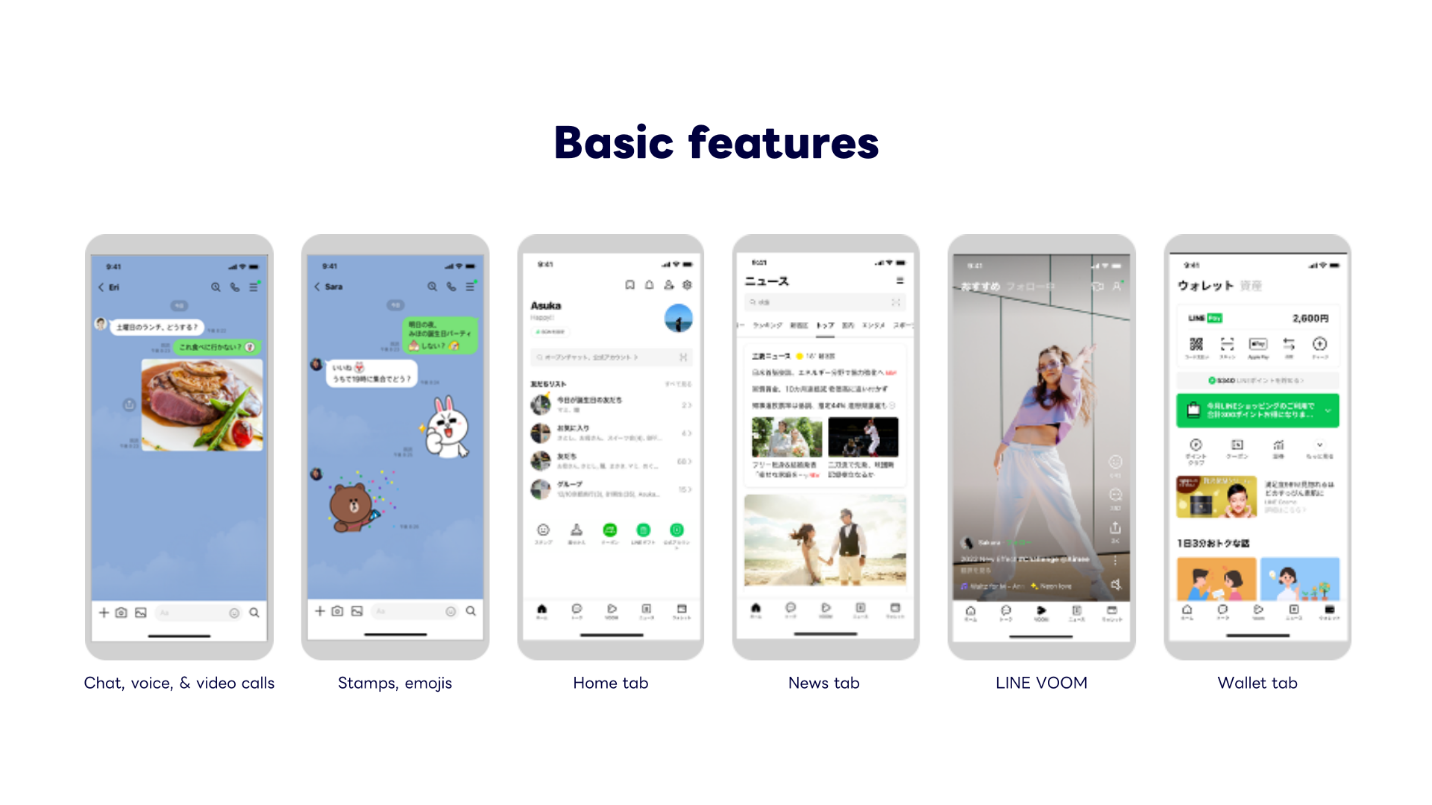
Is Yahoo! Japan a subsidiary of Softbank? I just returned from Japan myself and have seen several Yahoo! Japan offices. They were always accompanied by the Softbank logo. Please elaborate
While Yahoo! JAPAN and SoftBank have a long-standing relationship, it’s important to clarify that it’s not strictly a subsidiary. SoftBank has been a major shareholder in Yahoo! JAPAN for many years, however, Yahoo! JAPAN operates as an independent company with its own management and business operations.
The close association between the two companies is evident in shared branding and strategic partnerships. SoftBank’s significant investment in Yahoo! JAPAN has allowed the company to grow and expand its services.
Do you think brands entering the Japanese market should advertise on those platforms? What are the benefits?
Absolutely, brands entering the Japanese market should consider advertising on LINE and Yahoo! JAPAN. Both platforms have a vast user base, allowing brands to reach a significant portion of the Japanese population. They are the 2 most popular digital platforms in Japan.
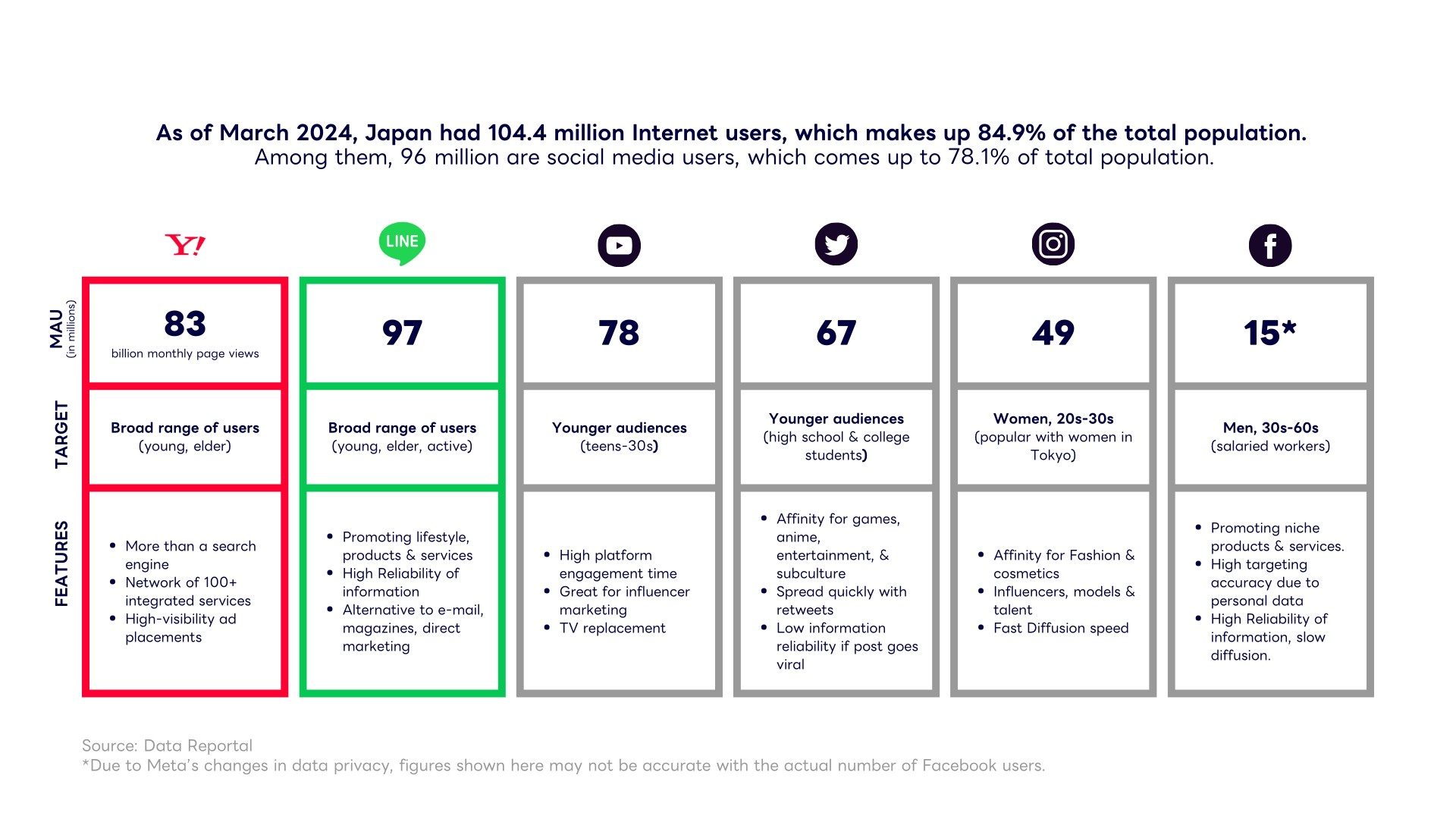
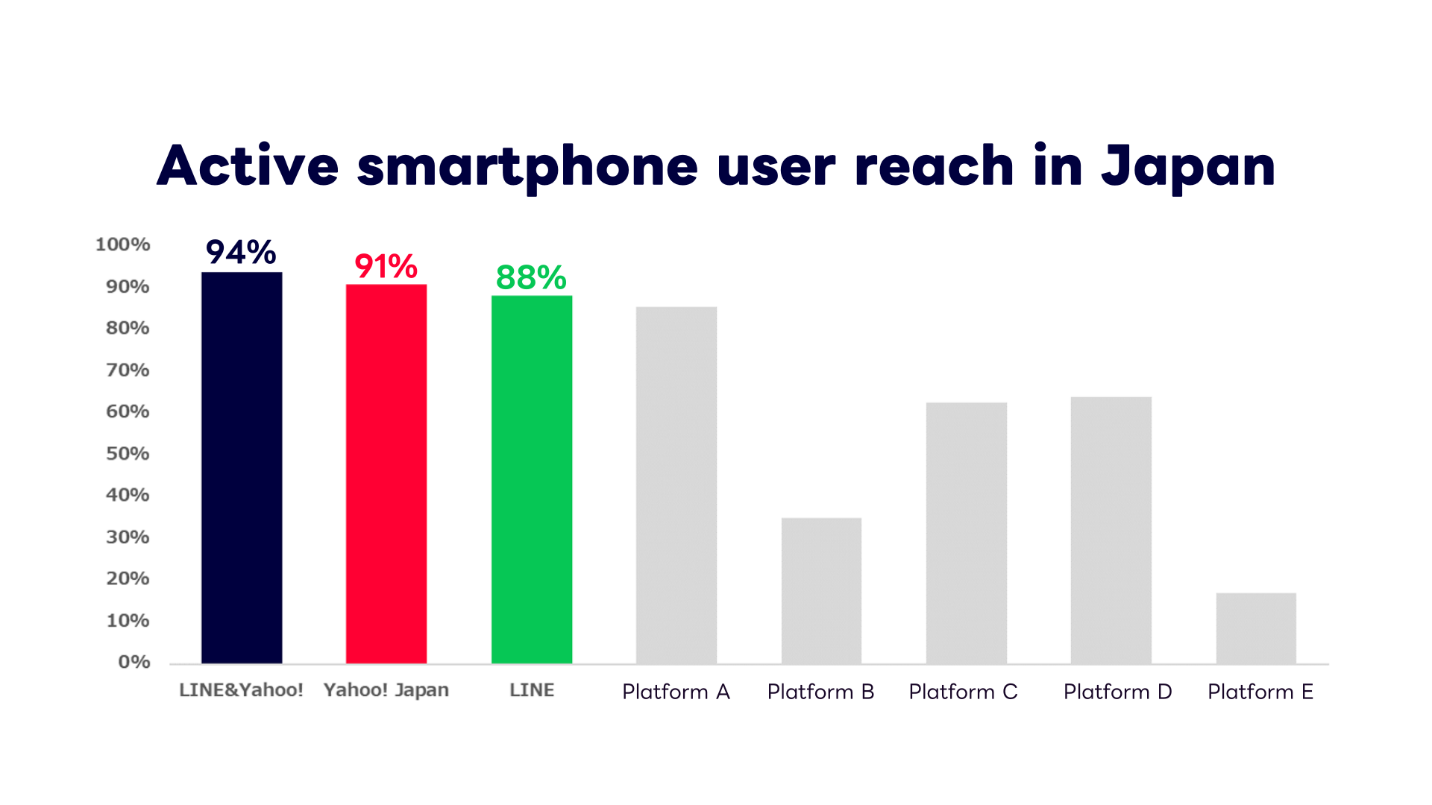
What are some of the unique challenges and opportunities in digital marketing within the Japanese market, particularly when compared to other global markets?
Entering the Japanese market presents a unique set of challenges for foreign businesses. One of the primary hurdles is the language barrier. Japanese is a complex language with multiple writing systems, and careful localization is essential to ensure effective communication with the target audience. Additionally, cultural nuances play a significant role in marketing success. Understanding Japanese customs, etiquette, and values is crucial for creating resonant marketing messages.
Another challenge lies in the unique digital landscape of Japan. Unlike Western markets, LINE and Yahoo! Japan dominate the social media and search engine landscape. To effectively reach Japanese consumers, businesses must adapt their strategies to these platforms. Mobile-first approaches are essential, as a significant portion of the Japanese population accesses the internet primarily through mobile devices.
What are some effective strategies for running successful digital marketing campaigns on LINE and Yahoo! JAPAN?
To effectively execute digital marketing campaigns on LINE and Yahoo! Japan, a deep understanding of the Japanese market is crucial. This includes a strong grasp of cultural nuances, language, and consumer behaviour.
Leveraging LINE's unique features is essential. Establishing a LINE Official Account allows direct communication with users, while LINE Ads provides targeted advertising opportunities. Additionally, creating branded stickers can enhance brand visibility and engagement.
Secondly, data-driven marketing is key. By utilizing analytics tools to track campaign performance, we can optimize our strategies and maximize ROI. A/B testing different ad creatives and targeting options can help identify the most effective approaches.
Lastly, partnering with local experts like us can provide invaluable insights and support. Collaborating with local agencies or consultants can help us navigate the complexities of the Japanese market and ensure your campaigns resonate with the target audience.
How do Japanese consumers' online behavior and preferences differ from those in Western markets?
Japanese consumers exhibit unique online behaviors that differ significantly from those in Western markets. They are known for their high standards, often prioritizing quality over quantity. This preference for premium products and services is reflected in their online shopping habits.
Moreover, Japanese consumers are highly influenced by social media, particularly platforms like LINE and Twitter. They rely heavily on recommendations from friends, family, and influencers. This social proof plays a crucial role in their purchasing decisions.
Another key difference lies in their approach to online shopping. Japanese consumers are often meticulous in their research, comparing prices, reading reviews, and seeking recommendations before making a purchase. They value trust and reliability and are more likely to buy from reputable brands and retailers.
Additionally, Japanese consumers tend to be more privacy-conscious than their Western counterparts. They are wary of sharing personal information online and may be hesitant to engage with intrusive marketing tactics.
How are Yahoo! Japan and LINE leveraging the AI opportunity? Is Japan an adaptor of AI at all?
Japan has been actively embracing the AI technology. In terms of our platforms, LINE has been integrating AI into its services to enhance user experience and efficiency. This includes AI-powered chatbots for customer service, AI-driven recommendations for news and content, and AI-enhanced image and voice recognition features.
Yahoo! JAPAN has also been investing heavily in AI research and development, for example implementation of AI-powered search algorithms to provide more relevant and personalised search results. Additionally, Yahoo! JAPAN has been exploring the use of AI for tasks such as content moderation, data analysis, and personalised advertising.
OpenAI launched SearchGPT. Is this a threat to Yahoo! search in Japan? How it may affect the local market experience?
While OpenAI’s SearchGPT represents a significant advancement in AI technology, it’s important to remember the unique strengths and position of Yahoo! JAPAN in the Japanese market. It has a strong foothold built on years of trust and user loyalty. It has a deep understanding of Japanese culture, language, and user preferences - all so crucial for delivering relevant and personalized search results.
As I mentioned, Yahoo! JAPAN has been actively investing in AI development itself, and I believe it can effectively compete with the likes of OpenAI. Yahoo! JAPAN aims to continue to innovate and adapt to the changing technological landscape.
Could you please share a success story of a foreign company that has entered the Japanese market and with your help managed to succeed?
We worked with a Finnish food delivery service company that connects customers with local restaurants and couriers through a mobile app or website. As part of their wider strategy to grow in Asia, in 2020 they launched their service in Tokyo, Japan. And from the start, we have been helping them with brand awareness campaigns and user acquisition campaigns on the Yahoo! JAPAN network. Four years later, they have expanded throughout all regions of Japan and they are now in the process of strengthening their reach to users via LINE Official Account operations and various LINE Ads solutions.
What about a sad failure, who had to wrap up their Japanese operations exactly for the same reason - market-specific and cultural differences?
While it’s not a brand we’ve worked with, I’d like to tell you about my favorite example of how even well-established brands can fail in the Japanese market without proper research and localization of their products and services.
Did you know that IKEA was forced to leave the Japanese market just a few years after entering it for the first time?
They first entered the Japanese market in the early 70s. There were many things that went wrong, mostly because they failed to adjust to local consumer preferences. The furniture that was offered was way too big for Japanese homes that are way smaller than European ones.
Many Japanese people did not own cars at that time and getting the furniture home was a big challenge.
It also did not make sense for Japanese people to have to put the furniture together on their own. They could simply pay a bit more for a better quality product that would be delivered and assembled for them elsewhere.
It took IKEA over 20 years to re-enter the Japanese market, and this time, they did their research. They reevaluated the product catalog and offered more smart storage solutions. Japan was the first country where IKEA implemented delivery and assembly on-demand services - now available worldwide. There are now 13 IKEA stores in Japan, and their first market entry attempt is a great cautionary tale for all brands, highlighting the importance of conducting proper market research and localizing the product.
Very interesting! To wrap up our discussion, what is some advice you are giving anyone interested in entering the Japanese market? Is it on their own or with a reliable partner?
Navigating the Japanese market can be complex. I would definitely advise partnering with local experts with deep knowledge of the local business landscape. Working with a Japanese marketing agency or consultant who can guide you on cultural nuances, market entry strategies, and regulatory compliance can be a game changer.
Another important thing is also building relationships with local businesses and industry associations. This can be invaluable for gaining insights into the Japanese market and establishing credibility. Networking can also help you identify potential partners or distributors.
Joanna, Maria, it was an insightful talk indeed. I know the particularities of the Asian Market specifically Japan’s, as we operate there and as of today have 128 service providers from 14 cities offering 84 services in design, development, or marketing fields. However, I couldn’t imagine the challenges one may have when expanding their operations in Japan. How much the local market and practices may impact the success or failure.
I hope our readers will extract the best ideas for themselves and act correctly, cooperating with a reliable partner in this exciting yet challenging endeavor.
Thank you, everyone and good luck with your next (or current) Japanese business venture!